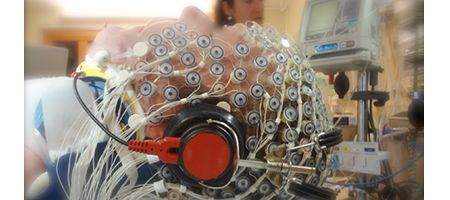Scientists have found a way of communicating with patients who appear to be in a persistent vegetative state, but actually retain consciousness.

Using an EEG, they say, is a simpler way of identifying and communicating with such patients than using an MRI scanner. And, unlike an MRI scan, the technique can be used on patients with metal plates or pins and can even be carried out at home.
A trial was carried out at Addenbrooke’s Hospital in Cambridge and the University Hospital of Liege in Belgium on 16 patients, all of whom had been diagnosed as being in a vegetative state.
The patients were asked to imagine clenching their hand or moving their toes while hooked up to the EEG. And, in three of the patients, brain activity similar to that in healthy people was detected by the device.
“As doctors, we as a rule ask the patient to respond to a simple command, such as ‘pinch my hand’, to assure us that the patient is conscious. When we obtain a response, everything is fine, but if we cannot detect a response that does not necessarily mean to say that the patient is unconscious. Sometimes he or she cannot move because injuries have affected the nerves, the spinal cord or the brain,” says explains professor Steven Laureys of the University of Liege.
“With our new test, we also ask patients to move their hand or their foot, but we no longer have confidence in the muscular response.”
The development not only means it should be easier and cheaper to establish whether patients are truly in a vegetative state, but also raises the possibility of communication. For example, they could be asked to imagine moving their fingers for ‘yes’ and their toes for ‘no’.
Unfortunately – and rather oddly -some of the healthy patients showed no brain response when asked to imagine making the movements – which means that the EEG technique can’t be used to rule out consciousness.





